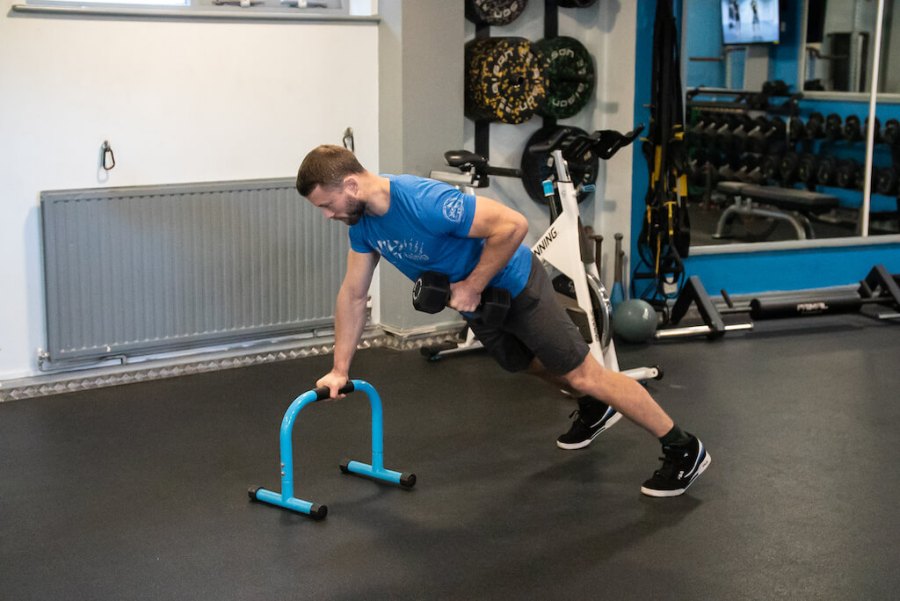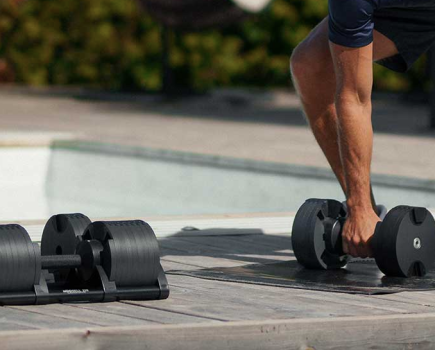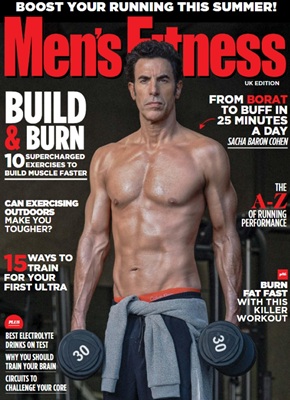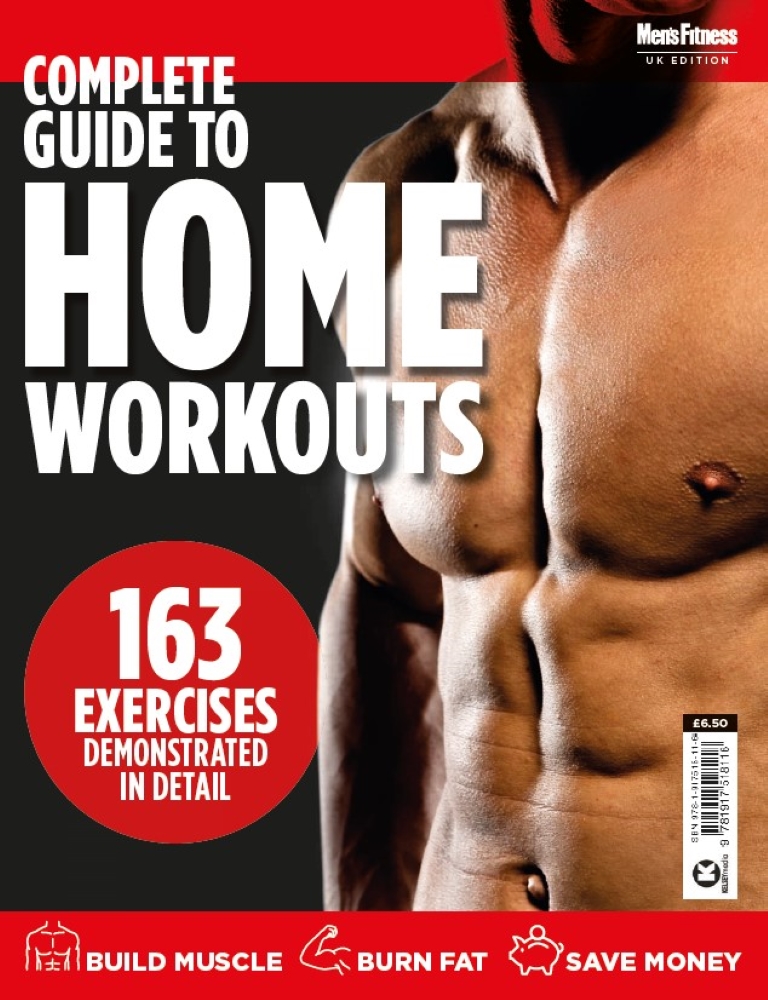MF’s strength specialist James Griffiths has devised a new training protocol for time-poor men to maximise strength and muscle in as little as three workouts per week…
Every so often an idea comes along that gets me really excited about my job, because I know it will help a lot of people enjoy their training. The 6XM programme is exactly that. Based on six concepts of movement, I believe it’s all you need to get reach a higher level of strength and general physical conditioning.
I’ve been a full-time personal trainer since 2007, and in that time the challenges in helping people enjoy their exercise and see results have not changed. There have always been three problems to solve: getting started, maintaining effective training, and avoiding injury or loss of interest.
Now the first thing I’ll say about those three challenges is that I get it. I’m a dad of three young boys, and a busy business owner. The world moves at a fast pace and has plenty of distractions that make your health and fitness a very easy cut from your routine, especially if you get bored, don’t see results or get injured.
So what’s the answer?
Simplify the way you measure your progress with strength training.
The more exercises you do, the less volume you do of each of them. Your training volume is such a powerful stimulus for men wanting to continually get stronger and see their body shape change. If your total lifting volume goes up while maintaining the same protocol, that means you’re lifting more weight, creating more stress on the muscles, and forcing your body to adapt.
DEADLIFT LADDER – WEEK 1
- 12 reps at 100kg = 1,200kg
- 9 reps at 120kg = 1,080kg
- 6 reps at 132kg = 792kg
- 3 reps at 145kg = 435kg
- 3 reps at 145kg = 435kg
- 6 reps at 132kg = 792kg
- 9 reps at 120kg = 1,080kg
- 12 reps at 100kg = 1,200kg
Total lifted = 7014kg
DEADLIFT LADDER – WEEK 6
- 12 reps at 120kg = 1440kg
- 9 reps at 145kg = 1,305kg
- 6 reps at 160kg = 960kg
- 3 reps at 175kg = 525kg
- 3 reps at 175kg = 525kg
- 6 reps at 160kg = 960kg
- 9 reps at 145kg = 1,305kg
- 12 reps at 120kg = 1,440kg
Total lifted = 8,460kg
The above shows a 1,446kg increase in total training volume across the six-week programme using the same protocol. That means you output more energy, and need your muscles to handle more work. Building that capacity for work is a simple way to ensure your muscles become more resistant to damage, grow, and get stronger.
The thing I love about training with volume as your focus is that it’s honest. Create a simple protocol and make sure each time you hit the workout you push to get those numbers up. It doesn’t mean drop the weight and hit hundreds of light reps. Your body just won’t respond to that in a powerful way. Stick to the reps, sets, rest times and make those numbers go up by getting bigger and stronger.
From a motivation point of view this is so powerful, because pretty much weekly you will see that number increase. Our bodies react to total volume really well if we approach increasing it by increasing the weights, rather than the reps. The numbers go up quickly, you get excited to see where you can take it, you stop focusing on your body shape and focus on the numbers, and as if by magic, your body transforms. Except it’s not magic: it’s just a smart work rate.
The way the 6XM programme works is that it takes this concept of focusing on training volume, and applies it to six movements that you push for a six-week phase of training. The simplicity of 6XM is the magic, because very quickly you understand what the programme is about, and how to progress with it.
It’s a workout concept you can keep in your back pocket, so whenever you’re short on time or energy, it’s so easy to take 6XM and use it for exercises that you want to build on.
6XM is simple enough, and engaging enough to get you started. It’s progressive in its structure, so you will never outgrow the system, which means you will always see results, and it’s so easy to change the six exercises you use within the programme every couple of months, so across a year or two you can build a robust physique and level of strength, without getting bored or running into overtraining injuries.
Technically, 6XM isn’t a perfect workout system from a science perspective, but of all the programmes I’ve written, the engagement and adherence to 6XM across a huge range of men – from young, old, fit, and untrained – has been better than anything else I’ve ever done. I think that’s because it solves the three challenges so well. For people wanting time-efficient results that never stop coming, 6XM is a winner.
This is an example of what one phase might look like: six exercises, for six weeks. To get the whole programme, download the Wild X Fitness app at wildxfitness.com
WORKOUT 1:
Lower body (perform once or twice per week)
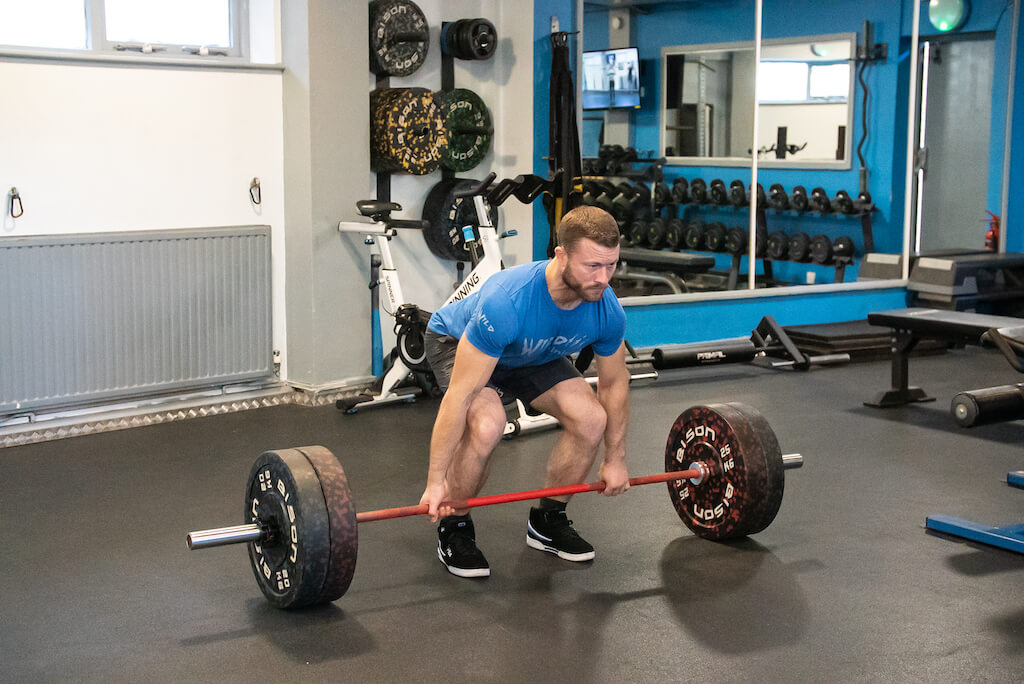
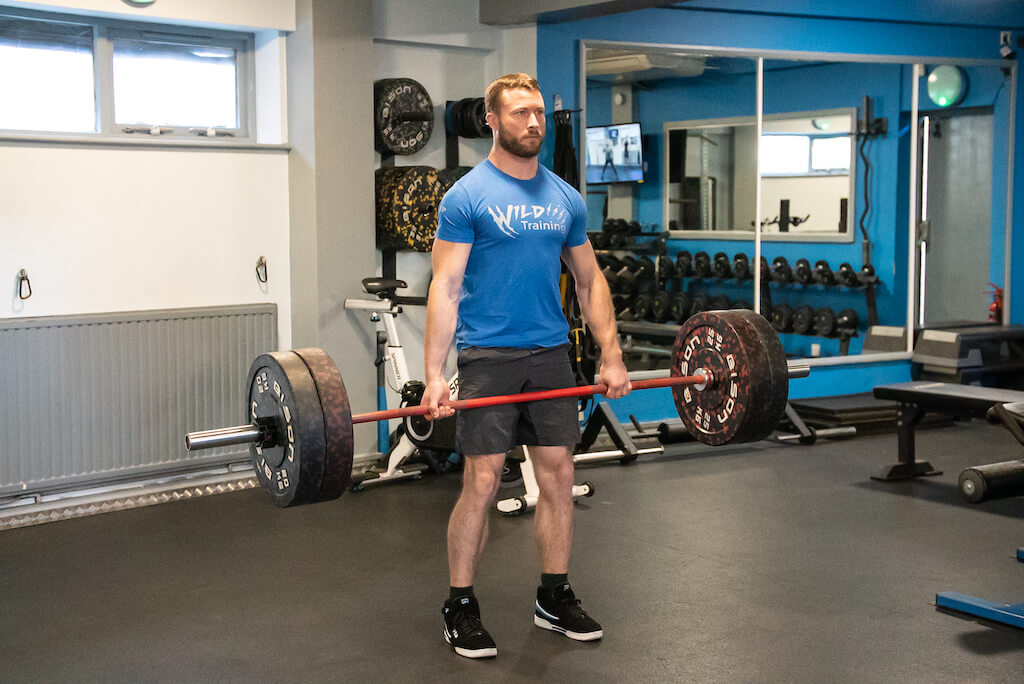
1. Barbell Deadlift Ladder
Reps: 12, 9, 6, 3, 3, 6, 9, 12
- Perform a 12-rep max set, then add 20% to the weight.
- Perform a 9-rep set. Add 10% to the weight.
- Perform a 6-rep set. Add 10% to the weight.
- Perform a 3-rep set. Then stick to the same weights as you go back up the ladder.
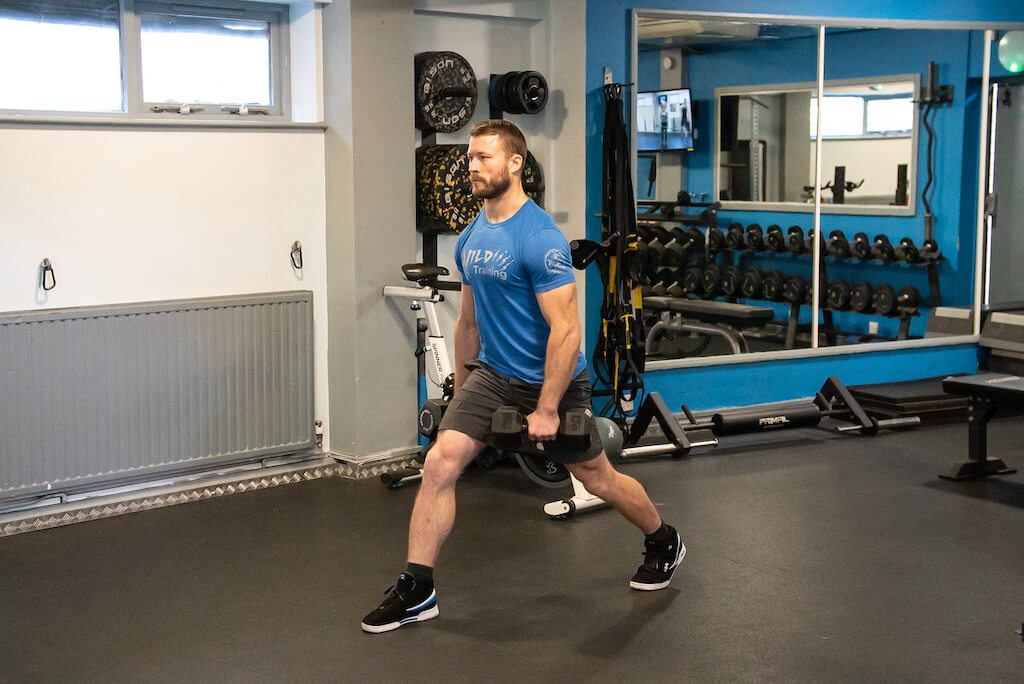
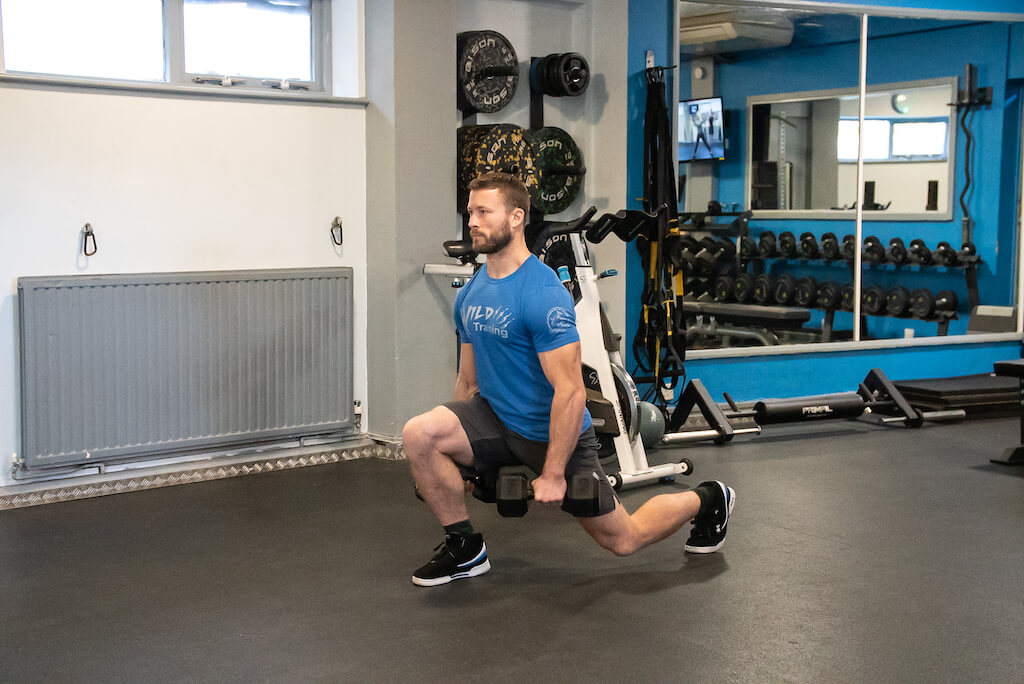
2. Dumbbell Split Squat
Reps: 5 x 5 / 5 x 10 (your choice – just make sure whatever you choose you perform to maximum intensity)
- Hold a pair of dumbbells by your sides.
- Take a long stride forward, then keep your feet still until you finish your set. Not moving in and out of the stance will increase your time under tension.
- Breathe in as you lower your knee down to the ground, maintaining plenty of tension in your core. Keep your chest high and back straight.
- Drive back up and breathe out until you lockout, but don’t wait at the top: go straight back down without resting.
WORKOUT 2:
Upper body (perform once or twice per week)
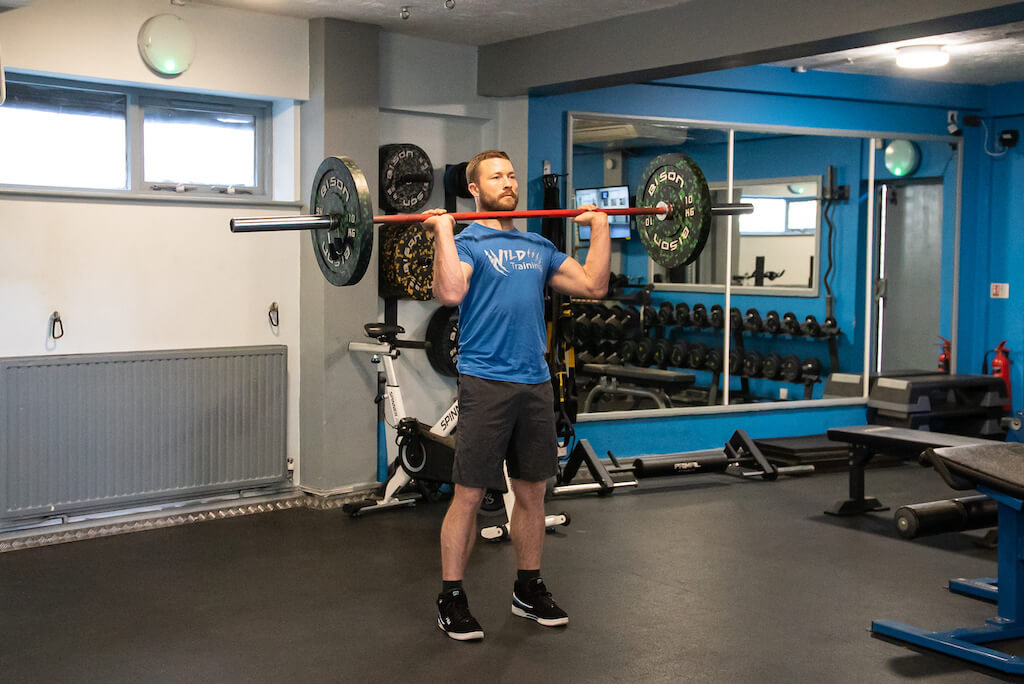
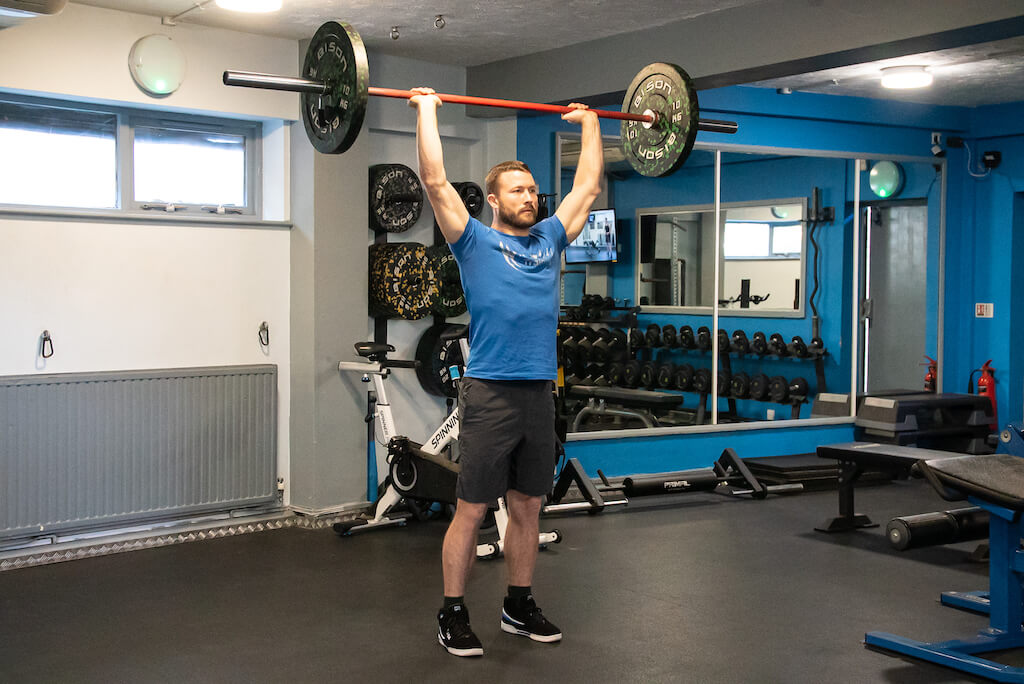
1. BB Shoulder Press
Reps: 5 x 5 / 5 x 10
- Rack the weight above your chest with your elbows under your hands and wrists flexed.
- Put your weight towards the outside edge of your feet and keep the bar in line with the centre of your feet throughout the lift.
- Take a deep breath before starting your lift and only breathe out after the bar has cleared your head. Then breathe in as the bar lowers back down, to fill your lungs up before the bar gets back to your chest.
- Minimise rest but take enough to get your next set down.

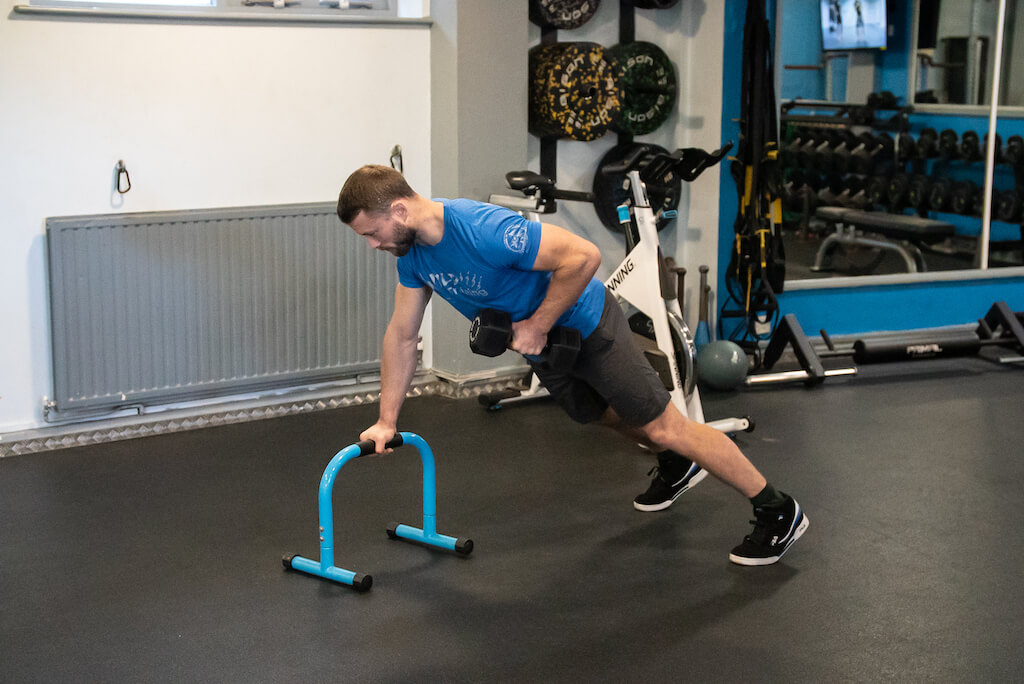
2. DB Renegade Row
Reps: 30 (5 left, 5 right, 5 left, 5 right, 5 left, 5 right), 20, 10
- Keep your shoulders and hips parallel to the floor, with your heels pointing straight up to minimise rotation in your body
- Retract your shoulders to get more of your lats engaged in the exercise. Don’t let the shoulder dump down to the floor at the bottom of the rep.
- I like to do the renegade row with my free arm on a bench or parallette to give me enough space to get the full range of movement without the weight hitting the floor.
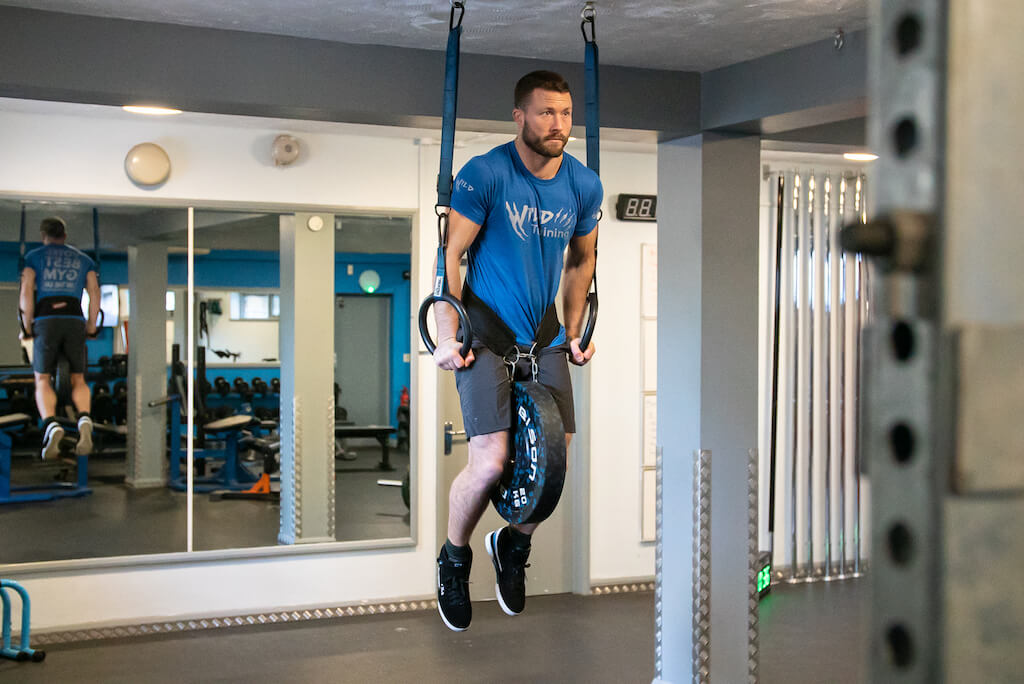
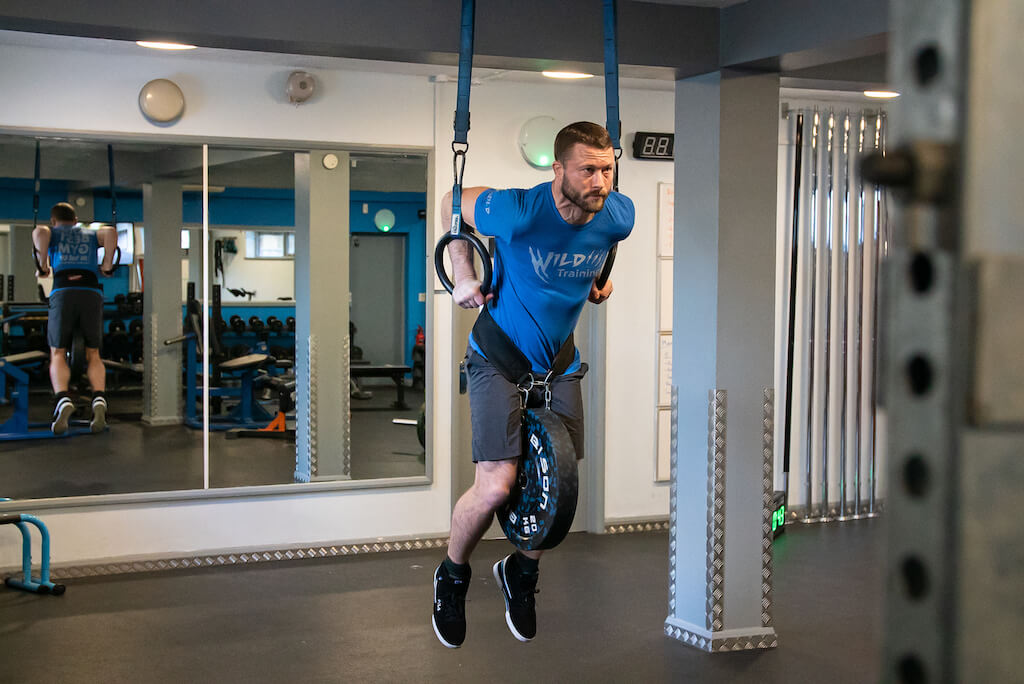
3. Olympic Rings Dip
Reps: 5 x 5 / 5 x 10
- Make sure you are stable at the top of the support position, with your shoulders depressed, before you start your rep.
- Slowly lower down to the bottom range of your movement. Don’t over-stretch and go too deep. Start small and get to know the comfortable range of movement for your shoulders.
- Lean forward slightly, but avoid pumping your legs.
- Minimise rest, but take enough to get your next set down: two minutes should be enough.
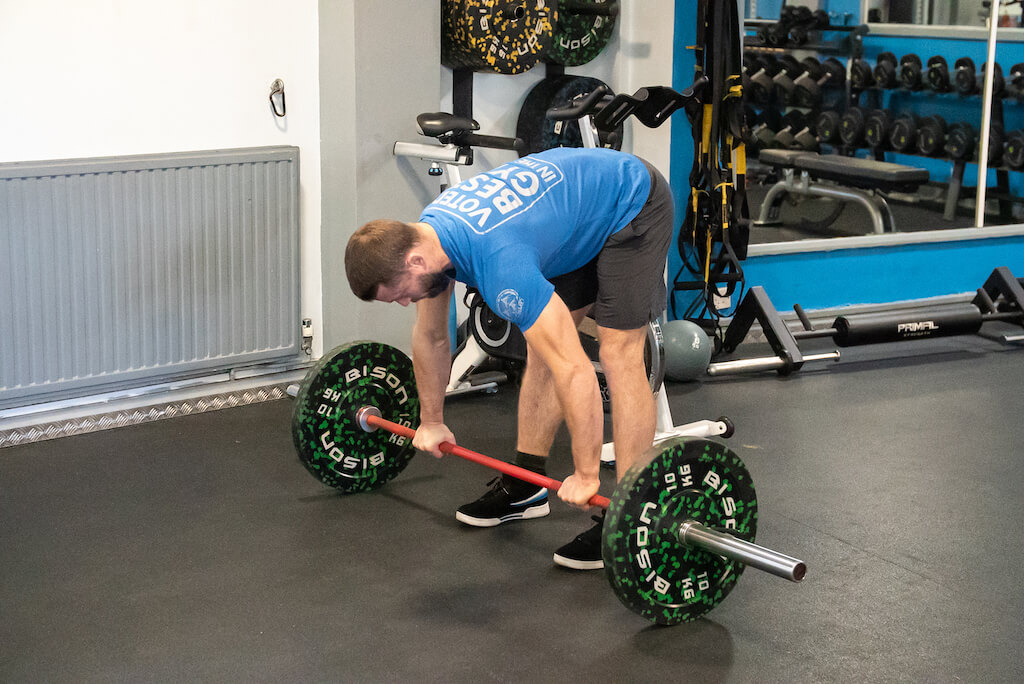
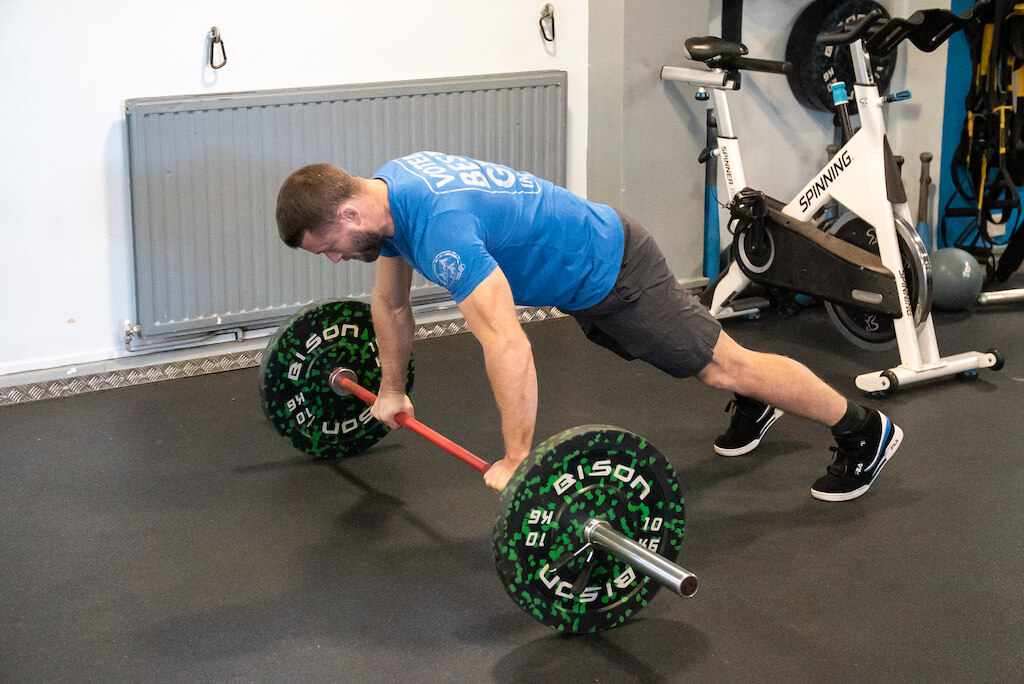
4. BB Roll-Out
Reps: 5 x failure
- The aim is to be able to do these from your feet, but start on your knees.
- Grip the bar just wider than shoulder-width, with your weight on the balls of your toes. Start from an upright position like a hamstring stretch.
- Rolling out to a press-up position should feel comfortable.
- When going for the roll-out you need to take a deep breath to help tighten your core. Tuck your tailbone under to help engage your abs. Locking out your glutes to do this works well.
- Take the bar out as far as you can, but make sure you can maintain the shape of your back and hips. Drive down through your arms to get back up.
Photography: Paul Jones

